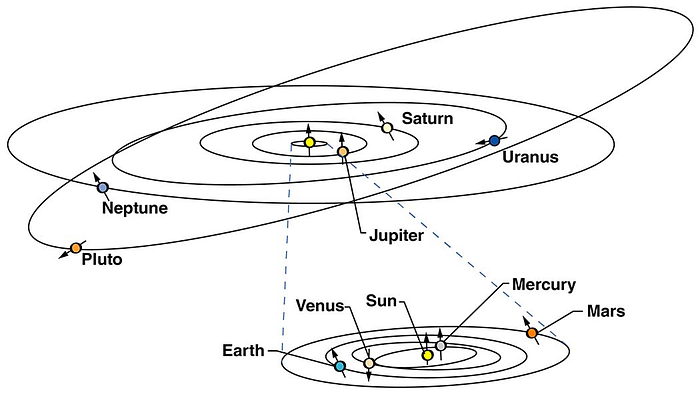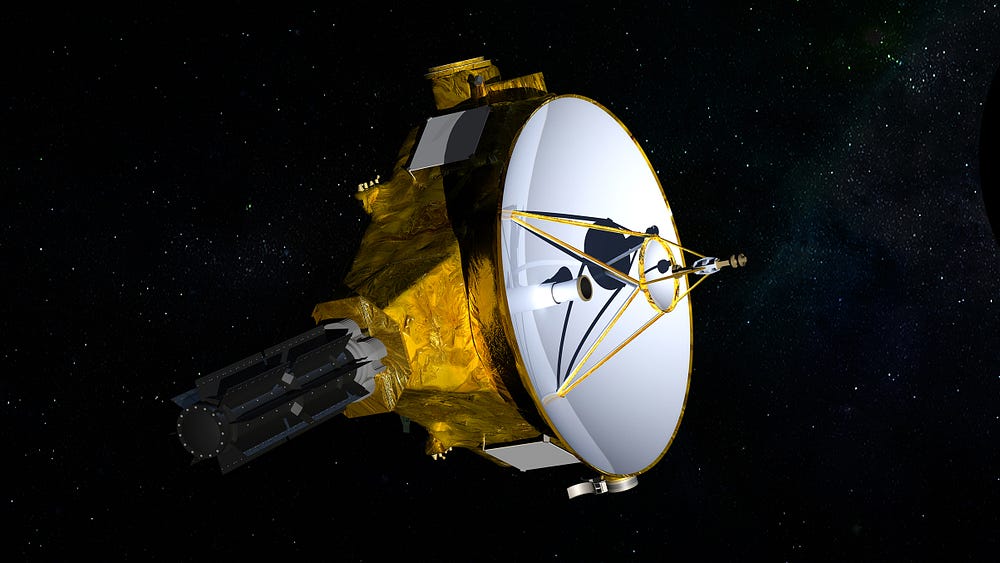Why was Pluto kicked out the planetary club?
And then there were eight.

Unless you’re pretty young, you learned in school that our solar system consists of nine planets.
When I was a kid, I learned the list of the planets by heart. Today when I list them, I still get a little twinge when I have to stop at Neptune. It just feels like something is missing, like leaving out ‘z’ at the end of the alphabet.
Maybe you experience the same thing or maybe you think I’m crazy, either way, the truth is that for the past 14 years Pluto is no longer a planet.
Most people think this is due to its size. While this is one of the reasons, the reality is a bit more complicated. Let’s look at why astronomers decided to downgrade Pluto.
What is actually a planet?
To know why Pluto is no longer a planet, it would be nice to first know what a planet is.
Planet comes from the Greek word “planēt” which means “wanderer”. In the 17th century, the word started to be used for rocky and gaseous bodies orbiting the sun, excluding the moon.
When new bodies like Uranus and Neptune were discovered, they were classified as planets, as was Pluto upon its discovery in 1930.
But in 1992, scientists started discovering first of many tiny frozen worlds in a region called the Kuiper Belt in Pluto’s vicinity. Pluto still remained king until 2005 when Eris was found, a distant body first thought to be larger that Pluto.
This discovery led to new questions: Should Eris also be a planet? What about all other objects in the Kuiper Belt, are they planets?
But those weren’t the only reasons that made scientists wander whether Pluto should really be a planet.
Pluto has been a bit of an oddball since the beginning.
For one, it’s tiny. Its diameter is only 2,730 kilometers, which makes it smaller than Earth’s moon.
Second, its orbit is erratic. Other planets in our solar system orbit the Sun in a largely flat plane. But Pluto orbits the Sun at a 17-degree angle. Not only that, its orbit is also highly elliptical and actually crosses Neptune’s orbit for 20 out of its 248 years. No other planet does that.

Because it’s dense and rocky, unlike its gaseous neighbors, many scientists believe that Pluto came from elsewhere in space and got caught up in Sun’s gravity. For a while, some even thought it was one of Neptune’s moons.
With all these Pluto’s eccentricities, the scientific community was starting to realize that their current definition of a planet was not good enough. We needed a new definition.
But that was easier said than done. In 2006, they were nowhere closer to a new definition than a year earlier. There were a lot of debate and disagreement as to which bodies should qualify as planets.
Redefining planets
In August 2006, International Astronomical Union General Assembly met in Prague. For eight days they discussed the issue.
On August 24, 424 astronomers voted to create three new categories of objects in the solar system: planets, dwarf planets and small solar system bodies.
According to this new definition, Pluto and its kin Eris were not planets, but dwarf planets. So, what exactly is the new definition of a planet since 2006?
Well, it consists of three conditions. The first two are pretty straightforward: planets are spherical due to their gravity and they orbit their star.
Pluto meets these two requirements: it’s round and it orbits the Sun. But the last condition is trickier and that’s where things get complicated for Pluto.
Since 2006, a body is a planet if it has cleared its neighborhood of smaller objects.
This means that by the end of its formation, a planet needs to become gravitationally dominant. It can share its orbital space with bodies that are under its gravitational influence, like its satellites, but not with other objects of similar size.
Pluto is constrained in its orbit by the gravity of Neptune and shares its orbital neighborhood with many Kuiper belt objects, so it doesn’t meet this last condition.
And that’s it, that’s the official reason Pluto is no longer a planet, but a dwarf planet. A dwarf planet orbits a star, is spherical, hasn’t cleared the neighborhood around its orbit, and is not a moon.
Today, four other bodies, beside Pluto, are considered dwarf planets: Eris, Ceres, Makemake and Haumea. Another six objects are waiting for official confirmation, and there may be as many as 10,000 other dwarf planets in our solar system.
The vote to demote Pluto, however, did not go down easily in the scientific community.
The first of many critics was that the decision was taken by only a handful of the world’s astronomers and thus doesn’t represent the views of the whole community. The term ‘dwarf planet’ was also deemed ambiguous as dwarf planets are not actually planets.
Some argue that other planets in our solar system haven’t cleared their surroundings either. Earth, for example, regularly encounters asteroids in and near its orbit.
Of course, the fact that Pluto is officially no longer a planet doesn’t make it any less interesting for observation and exploration.
New Horizons space probe was launched by NASA in January 2006 on a mission to study Pluto, its biggest moon Charon, and the mysterious Kuiper Belt.
Since this system lies 5 billion kilometers from Earth, this was no easy task.
Once close to Pluto, it actually took 4.5 hours for a message to travel one way between the probe and Earth.

New Horizons performed a six-month flyby of Pluto in 2015 and became the first spacecraft to explore this icy dwarf.
It discovered many astounding facts about this tiny world and its satellites.
Pluto’s surface is a lot younger than we thought, indicating recent geological activity.
There is also evidence of an underground ocean on Pluto.
And, its 1,000-km-wide heart-shaped nitrogen glacier is the largest known glacier in the solar system.
Since 2019, New Horizons has been exploring the Kuiper Belt and is expected to continue into 2021.
Bottom line
Now you know why Pluto is no longer a planet: because it hasn’t cleared its neighborhood of other objects.
It has a strange orbit that crosses Neptune’s and also shares its orbital neighborhood with Kuiper belt objects.
It might seem obvious what a planet is, we live on one after all, but putting together a scientific definition is a whole lot trickier.
Until today, many people are unhappy with the exclusion of Pluto from the planetary group.
New propositions for the definition of a planet pop up regularly and chances are that the current definition will someday evolve.
But will Pluto ever be a planet again? That remains to be seen.

If you like this story, please share it with your friends. Thank you!
